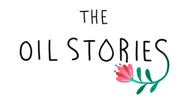Lemongrass Essential Oil (10 ml)
Lemongrass' Story
Very often people have mistaken Lemongrass for his fellow oil, Lemon, and Lemongrass is sick of explaining over and over again that they are not related. Not even part of the extended Citrus family, nope. However, him and Lemon never let this misunderstanding affect their relationship, and they are still good friends. You would rarely see either of them in a bad mood, and lemongrass especially seems to not get agitated about it at all
Lemongrass is quite adventurous and enjoys travelling to tropical places. Partly because he is genuinely curious and partly to show off to people that he has the unique capability to make mosquitos and other bugs vanish away in a jiffy. Could Lemon ever dream of doing that?
Lemongrass has a strong, vivacious character and usually dominates the other oils, but it’s not intentional- Lemongrass just really likes talking and wants to know you. Everyone gets mesmerized by his citrusy, yet herbal and woody aroma. He also has the ability to boost moods; however, the faint-hearted beware! If you stick around for too long you will get overwhelmed and your head will spin like a merry-go-round. Don’t say I didn’t warn you!
Aroma
Lemony, persistent and herbaceous
Clinical Applications
Wellness: Inhaling the aroma of Lemongrass enhances overall physical, mental, and emotional wellness. It an excellent addition to blends formulated to boost mood, relieve anxiety, calm the mind, and promote better sleep. It is also an outstanding tonic and can be inhaled directly or added to body care products to promote overall wellbeing. Lemongrass blends well with Frankincense, Palmarosa, Lemon, and Ginger for this purpose. The properties of lemongrass have been demonstrated through multiple studies including anxiety-relieving properties (Costa et al. 2011) and sedating properties (Silva et al. 2010).
Musculoskeletal: The analgesic and anti-inflammatory properties of Lemongrass (Boukhatem et al. 2014) make it very effective for reducing pain, inflammation, edema, and heat. Its high citral content gives Lemongrass its antinociceptive properties (Quintans-Júnior et al. 2011) and its myrcene content gives the oil its analgesic properties (Rao et al. 1990, Quintans-Júnior et al. 2011). Lemongrass blends well with Patchouli, Ginger, Palmarosa, Frankincense, Sandalwood, and Black Pepper.
Skin: Lemongrass has antifungal, antibacterial, and antiviral properties, which make it effective for combating acne (Faiyazuddin et al. 2009), soothing skin inflammations, and reducing Candida (Silva et al. 2008). This is contrary to studies that show that Lemongrass can cause irritation and sensitization (Tisserand and Young 2014). Blending Lemongrass in low concentrations with Rose, Sandalwood, Patchouli, and Geranium minimizes the risk of adverse reaction. Blending with oils containing d-limonene and/or α-pinene minimizes the risk of irritation (Rhind JP 2015).
Insect repellant: Diffusion or topical application of Lemongrass acts as an effective insect repellant. It protects the skin from insect bites when spending time outdoors.
Safety & Dilution
Maximum topical use dilution: 0.7% (1 drop in 1 tbsp carrier like coconut, olive oil, lotion etc). See here DILUTION GUIDELINES according to age or ailment.
It is advisable to avoid using Lemongrass when taking antidepressants. This is because of citral’s inhibitory actions on CYP2B6 enzyme.
Discontinue in case of any skin irritation. Avoid contact with eyes, inner ears and sensitive areas.
Keep out of reach of children. Do not apply on the skin of children younger than 2 years old. If pregnant, nursing or under medical care please consult physician. Do not use internally, unless directed by a licensed aromatherapist or physician.
Use with caution around pets. When diffusing in the room make sure the door is open so that the animal can leave in case of discomfort.
Shelf Life & Storage
Shelf Life: 4 years
We recommend storing oils in a cool, dark and dry area away from direct sunlight. Keep the cap closed tightly to avoid oxygen exposure. Oils that are past expiry date should not be used for therapeutic purpose but they can still be used for cleaning.
More Information
Latin Name: Cymbopogon citratus
Botanical Family: Poaceae (Graminae)
Main chemical constituents: Citral A, Citral B, Geraniol
Country: India
Extraction Method: Steam distilled
Plant part used: Grass
Culture: Unsprayed
Aromatic note: Top-middle




